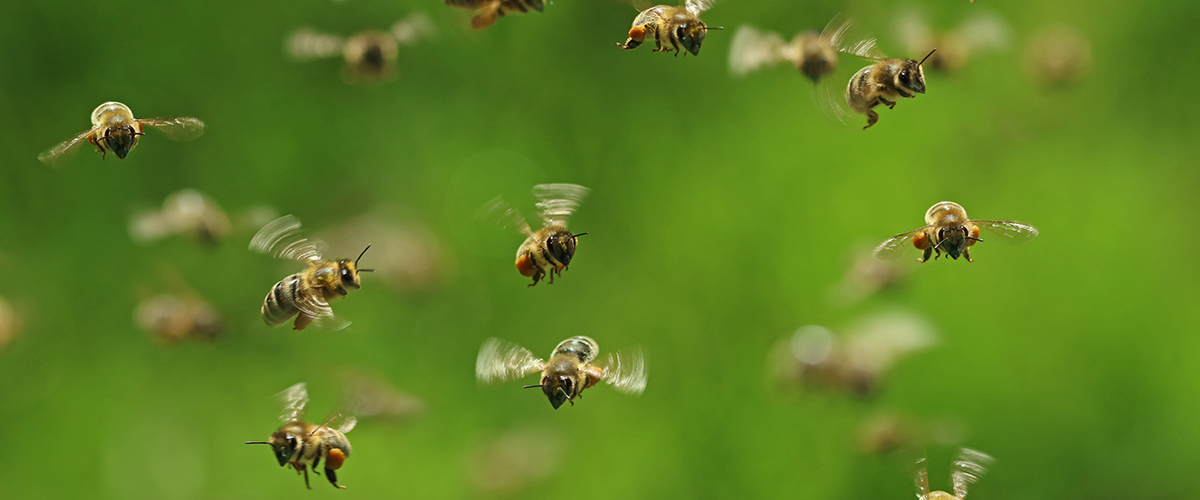Researchers studying wild bees in New York find that the pollinators prefer taller hemp plants in areas with more natural landscape diversity.
Researchers from Cornell University in New York wanted to know what types of bees were visiting hemp flowers in the state and which landscapes the bees preferred to visit more. What they found could help shape the new regulations of hemp agriculture in the United States.
“The rapid expansion of hemp production in the United States may have significant implications for agroecosystem-wide pollination dynamics. The potential for hemp to serve as a floral resource for bees is influenced by landscape composition, the height of hemp plants, and temporal factors,” the study’s authors wrote. “Growers, extension agents and policy makers should consider risks to bees as pest management practices are developed for this crop.”
According to the study’s findings, bees like hemp, but they like taller hemp even more.
“The height of hemp plants also had a strong influence on the abundance of wild bees visiting hemp flowers, with tall plants attracting nearly 17 times the number of visits compared to short plant,” the study’s authors wrote.
The study also shows that bees are more abundant in more natural landscapes. The researchers collected bees in nets while the bees were visiting hemp flowers on farms in New York. The farms varied in both landscape and hemp height and shape.
The researchers found that hemp supported 16 different bee species on New York farms.
According to the study, “nearly 60% of hemp’s bee community was represented by A. mellifera (the Western Honey Bee), which may be considered the most important and widely relied-upon species for agricultural pollination services in the country.”
More Hemp, More Pollen
It’s no secret that bee pollinators are an essential part of world agriculture, pollinating about one-third of the global food supply. According to scientific research, changing land-use patterns has threatened the sustainability of the pollination services that farming systems rely upon.
As U.S. agriculture has turned more to agriculture simplification and monocrops, or single plant farming, natural habitats for bees have diminished and pest management through pesticides and insecticides have been more heavily relied upon.
The new hemp industry has the potential to play a critical role in the pollination cycle because, “as an exclusively wind-pollinated crop, hemp lacks nectar but produces an abundance of pollen during a period of floral dearth in agricultural landscapes,” the study’s author wrote.
Timing is everything in the crop cycle and hemp provides pollen when other plants cannot. The study concluded that “hemp varieties that are taller and later flowering varieties may therefore better support the pollinator communities of other crops in the agroecosystem.”
The new bees and hemp study was published in the academic journal Environmental Entomology this month.
U.S. Hemp Regulation
Under the 2018 Farm Bill, hemp was distinguished as an agricultural commodity and was removed from the Controlled Substances Act. While hemp has a rich history in America, the new classification made hemp available for commercial growth and processing for the first time since the 1970s.
In October, the United States Department of Agriculture (USDA) released the interim final rule on federal hemp guidelines. With the long-awaited release, the USDA made a call for public feedback on the rules. Those interested can submit a comment, here. The deadline for submission is Dec. 30.
Cell cultures of the crop will be sent to the International Space Station in March to study the plant’s ability to adapt to unusual environments.
Learn more about the basics of hemp.
More on Cannabis
Find more scientific research regarding hemp and cannabis by visiting our scientific research page. Check back into our cannabis news page for the latest reports on cannabis in politics and business.






